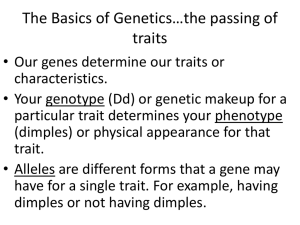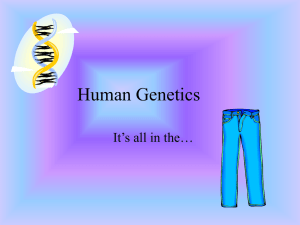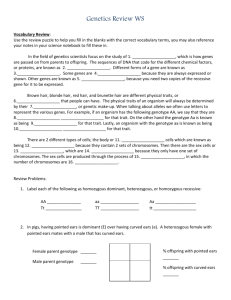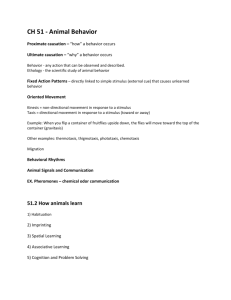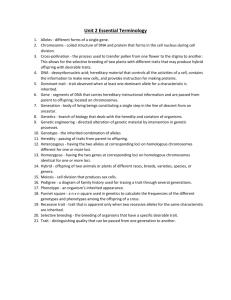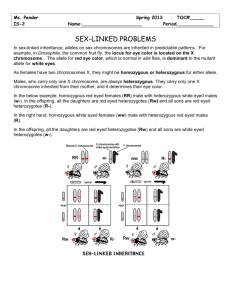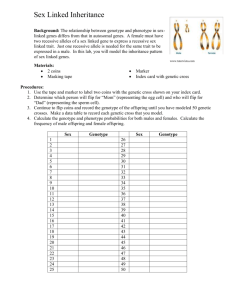LabHandout_EyeColor
advertisement
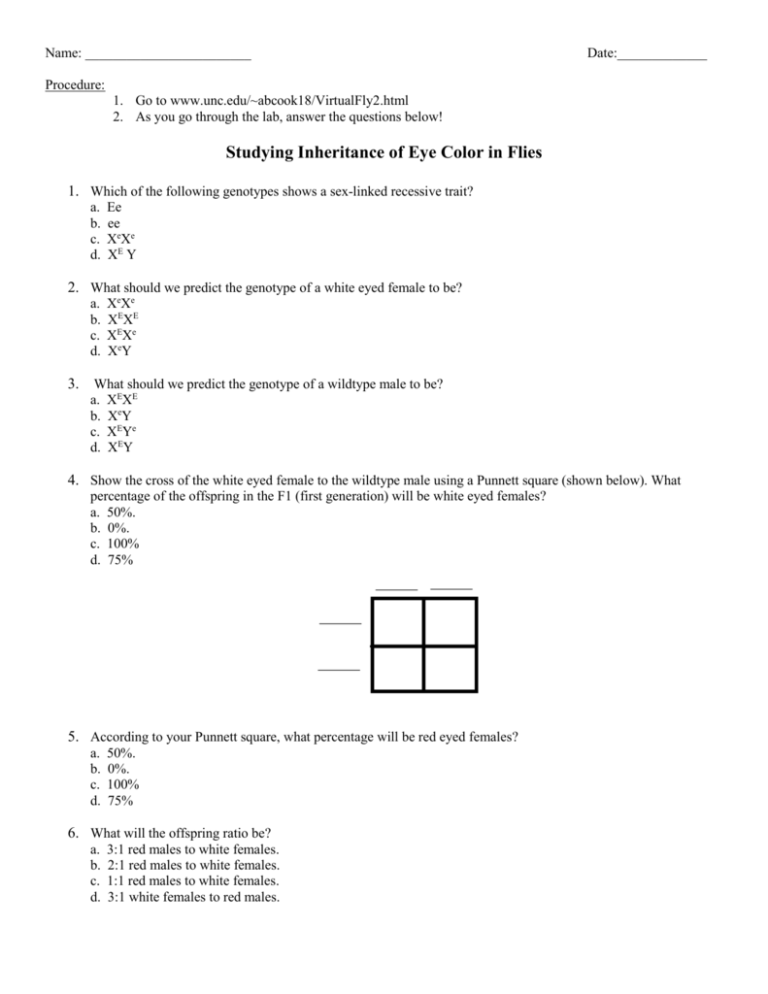
Name: ________________________ Date:_____________ Procedure: 1. Go to www.unc.edu/~abcook18/VirtualFly2.html 2. As you go through the lab, answer the questions below! Studying Inheritance of Eye Color in Flies 1. Which of the following genotypes shows a sex-linked recessive trait? a. b. c. d. Ee ee XeXe XE Y 2. What should we predict the genotype of a white eyed female to be? a. b. c. d. XeXe XEXE XEXe X eY 3. What should we predict the genotype of a wildtype male to be? a. b. c. d. XEXE X eY XEYe XEY 4. Show the cross of the white eyed female to the wildtype male using a Punnett square (shown below). What percentage of the offspring in the F1 (first generation) will be white eyed females? a. 50%. b. 0%. c. 100% d. 75% 5. According to your Punnett square, what percentage will be red eyed females? a. b. c. d. 50%. 0%. 100% 75% 6. What will the offspring ratio be? a. b. c. d. 3:1 red males to white females. 2:1 red males to white females. 1:1 red males to white females. 3:1 white females to red males. 7. On your Punnett square, you wrote letters above each space. What does each single letter represent? a. b. c. d. A complete genotype. A gamete that contains one allele ofthe gene from the parent. A gamete that contains a gene from the parent. A body cell that contains a gene from the parent. 8. Why must a fly have at least two recessive alleles in order to show the white eye color phenotype?</b><br /> a. Because this is a recessive trait, the fly cannot have alleles that encode for normal eye color proteins. This would cause the fly to have normal eye pigmentation.<br /> b. This is false; a fly that is heterozygous still has half the protein for white eye color and will therefore show the white eye color phenotype.<br /> c. The big E is capital and therefore stronger than the little e, so if any big E is present it will cover up the little e. Data Analysis 9. Overall, did your results support your hypothesis? a. Yes, because we hypothesized that the white trait was sex-linked recessive and the offspring ratio showed that the white trait was expressed in this pattern. b. Yes, because we hypothesized that the white trait was dominant and the the offspring ratio showed that the white trait was expressed in this pattern. c. No, because we hypothesized that the white trait was recessive and the offspring ratio did not show that the white trait was expressed in a dominant pattern. d. No, because our offspring ratio was not exactly 1:1. 10. If we crossed the F1 offspring (white males and wildtype females), what percentage, if any, of flies in the F2 generation would be white? a. 100% b. 50% c. 75% d. 25% 11. What percentage OF THE WHITE FLIES in question 2 would be females? a. b. c. d. 100% 50% 75% 25% 12. 4. Which is a correct prediction regarding total offspring we can expect from the cross in question 10? a. b. c. d. 1 white male, 1 red female. 1 white female, 1 red male. 1 white female, 1 white male, 1 red female, 1 red male. 3 white females, 1 red male. 13. After this experiment is completed, what else should you do? a. b. c. d. Record your results in your lab journal. Repeat the experiment. your results with other scientists (publish). All of the above.


